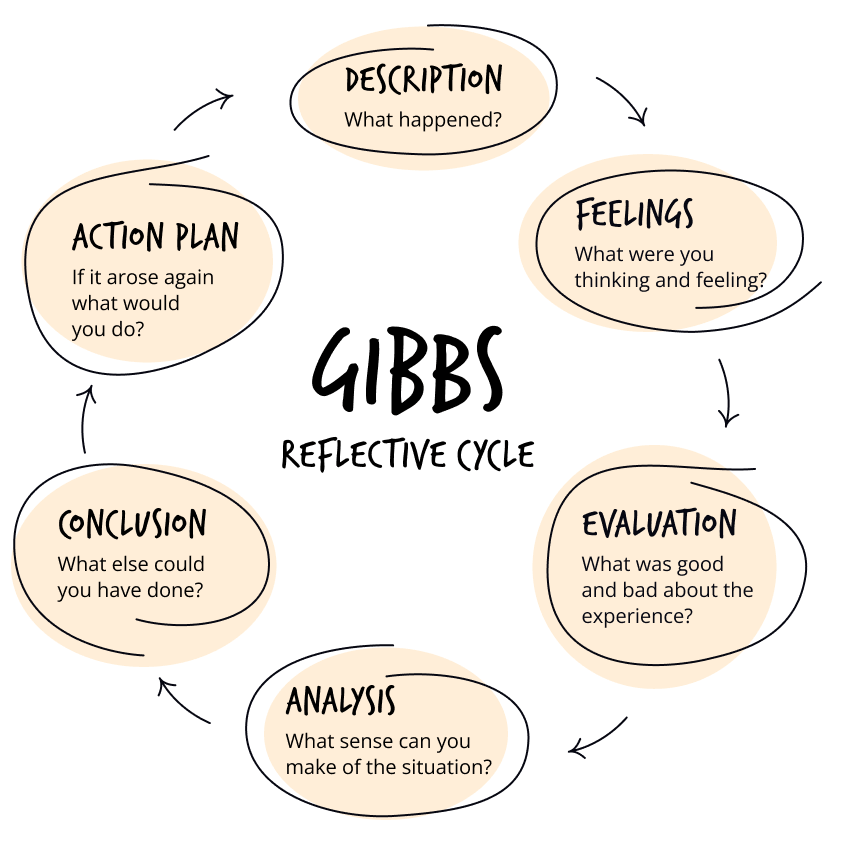The role of employee self evaluation and self-reflection in personal and professional growth

We’re all human, and sometimes it’s essential to take a step back to reflect on our personal and professional growth. Whether working towards that ever-important promotion or simply trying to improve overall well-being, employee self-evaluation can become a powerful tool to boost morale, help individuals achieve their goals and realize their full potential.
In today’s working world, it’s becoming common to see managers and HR teams ask employees to participate in an employee self-evaluation process. By reflecting on their strengths and weaknesses, employees can better understand themselves, their progress, and the steps required to perform well and feel satisfied.
So, join us as we explore the role of self-evaluation and self-reflection in personal and professional growth and provide practical tips for maximizing its benefits, whether you’re an employee or an employer.
Self-reflection vs. self-evaluation: What’s the difference?
While self-reflection and self-evaluation are related concepts, they are not exactly the same thing. Self-reflection involves the process of introspection, examining one’s thoughts, emotions, and experiences in order to gain insights and deeper understanding. It is a more holistic and subjective approach to examining oneself.
On the other hand, self-evaluation is a more objective assessment of one’s skills, performance, and achievements. It involves assessing oneself against certain criteria or standards to determine strengths, weaknesses, and areas for improvement. Employee self-evaluation often focuses on specific areas such as job performance, setting personal development goals, recognizing achievements and contributions, and facilitating constructive feedback and dialogue.
In summary, self-reflection involves a deeper examination of one’s thoughts and experiences, while self-evaluation is a more structured assessment of one’s skills and performance against certain criteria.
In today’s rapidly evolving world, self-reflection has become a more common aspect not only of our personal lives, helping us navigate the rollercoaster of life, but also our professional lives. So, let’s focus on employee self-reflection specifically, and dive deeper into the process of self-reflection in the workplace.
The process of self-reflection
Self-reflection is an introspective process that requires honesty, vulnerability, and a willingness to see yourself and your experiences with clarity. It’s a way to gain insight into your thoughts, feelings, and behaviors and take meaning from your experiences.
Here are some steps to guide you through the process of self-reflection.
Find a quiet and comfortable space to be alone with your thoughts. Away from the stresses of life. Away from the stresses of work. Take a few deep breaths and allow yourself to settle into a calm state.
It’s time to self-reflect!
Begin by asking yourself honest open-ended questions that encourage introspection:
- “What are my values and beliefs?”
- “What really motivates me?”
- “What are my strengths and weaknesses?”
- “What challenges have I faced, and how have I responded to them?”
- “Am I prepared for a career change in the case of any changes?”
- “Am I fulfilled with my current role?”
Allow yourself to be honest and vulnerable in your reflections.
Embrace the opportunity to examine both your successes and failures without judgment. It’s also essential to consider the future and think about how you can prepare for a career change or what steps you can take to achieve your professional goals.
Remember that acknowledging and understanding uncomfortable thoughts or feelings is essential to personal growth. By accepting our imperfections, we can identify areas for improvement and create a roadmap for positive change.
No doubt, your journey of self-reflection will have thrown up some introspective questions and reflective thoughts.
“Could I improve how I handled things?”
“I wonder what people think about me?”
“Am I a positive and motivating influence on those around me?”
This is a good time to ask your friends and colleagues for some feedback. And remember, don’t take any comments to heart—this is all about growth!
Now that you’re a wise guru who truly understands one’s self; it’s time to lay out some goals and objectives going forward. Hold yourself accountable for following through on your plan.
Following these steps will help you on your journey of self-reflection.
Let’s now explore self-reflection and its ever-increasing importance in the context of the workplace.
Why is self-reflection important in the workplace?
Ever felt like a hamster running in a wheel at work, constantly moving but not making any real progress? It’s a common issue and one that can lead to feelings of burnout and dissatisfaction.
Spill’s research reveals a concerning statistic: 67% of US employees believe that burnout has intensified during the pandemic. This alarming figure has significant implications for both mental well-being and overall productivity within our society.
Moreover, organizations should also take note, as burnt-out employees can incur substantial costs. In fact, they account for $3,400 out of every $10,000 in salary due to increased turnover rates and reduced productivity. This highlights the urgent need for proactive measures to address burnout and promote a healthier work environment.
But there’s a solution: self-reflection.
Consider the case of Jane, a busy executive who spends her days attending back-to-back meetings, responding to emails, and dealing with client issues. With such a hectic schedule, she barely has time to catch her breath, let alone self-reflect.
Although Jane feels she handles everything well, feelings of anxiety, stress, and unhappiness are beginning to show beneath the small cracks in her motivation and will.
Without time to take a step back and assess, Jane risks remaining stuck in a cycle of unfulfillment and stagnation, dreading the next day at work.
Thankfully, Jane’s manager steps in and offers a self-reflection program, giving her a chance to voice her concerns and get to the root of her work-based grievances. Together they figure out what issues can be alleviated through simple changes in the workplace and come up with a long-term plan for managing Jane’s workload. The result? Jane now works smarter, not harder, playing to her strengths without feeling overwhelmed.
In today’s fast-paced world,employee self-reflection is becoming more critical for ensuring that employees are happy and satisfied, and can maintain productivity at work.
The process of self-reflection in the workplace
Here’s a three-step process for self-reflection in the workplace:
Explain the benefits of self-reflection for personal and professional growth and encourage employees to make it routine.
This is the first step in helping to build a culture of growth and development in the workplace.
A list of resources and tools supporting self-reflection could include training sessions, coaching sessions, and access to software tools that allow employees to outline and monitor their development and productivity.
Use tools that allow seamless communication and help manage workloads, such as Slack and Gmail integration, to enable employees to connect while organizing their workflow. Health and wellness apps can also allow employees to track their progress over time.
Additionally, providing access to external resources such as Person Search tools can be helpful for employees to easily find and connect with colleagues they may not know well, helping to foster a culture of openness and collaboration.
Encourage employees to exchange their reflections and insights. Provide opportunities for feedback, employee self assessment, and discussion. Check-in regularly to make sure every employee feels satisfied with their development.
Make it clear that self-reflection is not a one-time event but an ongoing process that is valued and supported by the company.
The danger of self-reflection programs at work is that they can often seem as though they’re set out just to benefit the company by making employees feel they should work harder.
However, it’s important to show that the benefits of self-reflection go both ways. By encouraging employees to reflect on their experiences and offering support and recognition for their progress, businesses can create a positive feedback loop that benefits everyone involved.
Employees who feel valued and supported are more likely to be engaged, productive, and committed to the company’s success.
Happy bosses and happy staff—it’s a win-win!
Gibbs Reflective Cycle – an efficient tool for self-reflection
Gibbs Reflective Cycle serves as a valuable tool for self-reflection in the workplace. By following its structured stages, individuals can analyze their work experiences, identify strengths and areas for improvement, and make informed decisions for personal and professional growth.
Firstly, they describe the event or situation, noting key details and emotions involved. Then, they analyze their thoughts and feelings, gaining insights into their own biases and reactions. Next, they evaluate the positive and negative outcomes of their actions, understanding the impact on their work performance. They explore alternative approaches, considering different perspectives and strategies.
From this reflection, individuals extract key insights and lessons learned, connecting them to broader concepts or theories. Finally, they develop an action plan, implementing changes to enhance their future work performance. By utilizing Gibbs Reflective Cycle, individuals can foster self-awareness, improve problem-solving skills, and continuously evolve in their professional endeavors.

The benefits of self-reflection at work
Self-reflection has many benefits in the workplace. Here are a few:
For Employees:
- Gain clarity on personal and professional goals.
- Identify areas for improvement and take proactive steps to develop skills.
- Build self-awareness and emotional intelligence.
- Improve decision-making and problem-solving abilities.
- Enhance communication and collaboration skills with colleagues.
For Employers:
- Encourage a culture of growth and development.
- Increase employee engagement, productivity, and job satisfaction.
- Retain top talent by investing in employee growth and development.
- Reduce employee turnover and associated costs.
- Foster innovation and creativity by allowing employees to recognize and capitalize on their unique strengths.
As you can see, the benefits of self-reflection are plentiful for both employees and employers.
airSlate empowers anyone to create powerful documents and automate document workflows. From simple tasks like editing PDFs to creating forms to eSigning, airSlate is everything you need to create, integrate, and automate your document workflows. But most importantly, airSlate frees up your time by introducing automation to everyday work, enabling you to use valuable hours and resources on the things that truly matter – self-evaluation and self-reflection.
Empowerment through self-reflection
Self-evaluation is crucial for personal and professional growth in today’s fast-paced and restless world.
In conclusion, self-reflection is an essential practice that can empower individuals to grow and thrive personally and professionally. By taking the time to understand one’s strengths, weaknesses, and motivations, employees can create actionable plans for self-improvement and career advancement.
Employers who support self-reflection and provide the necessary tools and resources foster a culture of growth, development, and accountability. Employees and employers benefit from increased engagement, productivity, and overall job satisfaction by encouraging open communication and celebrating progress.
Hopefully, the advice in this guide has highlighted the importance of self-reflection and how it is central to the well-being and productivity of employees in the workspace and in their personal lives. Regular self-evaluation improves performance, increases job satisfaction, and creates a more positive work environment.
Embrace the power of self-reflection to create a more fulfilled and prosperous future for yourself and your team.
- Self-reflection vs. self-evaluation: What’s the difference?
- The process of self-reflection
- Why is self-reflection important in the workplace?
- The process of self-reflection in the workplace
- Gibbs Reflective Cycle – an efficient tool for self-reflection
- The benefits of self-reflection at work
- Empowerment through self-reflection

